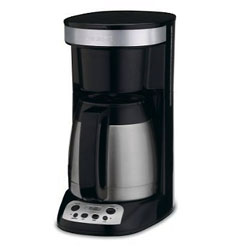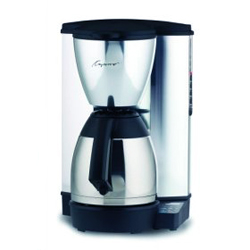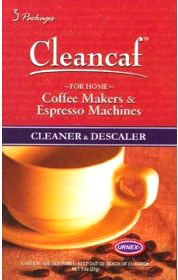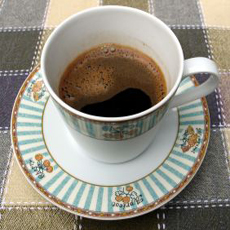This is Page 3 of a four-page article. Click on the black links below to visit other pages.
Eight Steps To Professional-Tasting Coffee, Continued
5. The Right Proportions. The next trick is to get the proportions right: two tablespoons of ground beans per “cup” if water. Note that in the coffeepot business, a cup is not 8 ounces. The portions are based on 4.4 to 5 ounces of coffee, to fit into old-fashioned tea cups that held six ounces of liquid. The amount of liquid to fill it (and allow for milk) is a minimum 4.4 ounces. Thus, a ten cup coffee maker will yield just 44 to 50 ounces of coffee—not exactly ten of today’s large mugs which hold twice that.
6. Drink Coffee Fresh. Brewed coffee is a fragile beverage—because of the tannins, it doesn’t take to heat contact and re-heating the way other beverages do. When a glass pot sits on the warming plate, the coffee continues to heat. In 15 to 20 minutes, any pot of coffee on a hotplate is scorched or “burnt,” with a bitter taste. If you haven’t finished the contents before the 15-minute point, take the coffee off the heat and turn it into iced coffee. Or, brew your coffee into a thermos that doesn’t require a hot plate like these two below, which will keep your coffee warm and tasty for hours:
 |
 |
| Cuisinart Compact Coffee Maker 10-Cup Thermal Carafe. Thermal carafe keeps coffee warm without “burning” on a warming plate. Small footprint, gold-tone filter, charcoal water filter, brew pause function, self-clean function. Click here for more information or to purchase. |
Capresso 441.05 MT-500 Plus 10-Cup Coffeemaker with Metallic Alloy Body and Stainless Thermal Carafe. A higher-end model with a timer and other features. Brews up to 10 cups in just 8 minutes. $144.00. Click here for more information or to purchase. |
If you use a thermal carafe unit, before brewing, warm the carafe by filling it with hot water for a few minutes. We heat two mugs of water in the microwave (the mugs we’ll use for the coffee after it’s brewed) and use that water to warm the carafe.
7. Scrub The Pot. The coffee pot needs more than a quick rinse: the oil and mineral residue are invisible but they build up and can make coffee taste bitter and stale. Take a scrubbie and scrub the pot clean with soap, then rinse it thoroughly. Some people hesitate to add soap because they fear it will leave a soapy taste in their coffee. A double or triple rinse should quell all fears; or put the glass carafe in the dishwasher.
8. Clean The Water Tank. Follow the manufacturer’s directions and clean the machine monthly, or as indicated, to remove lime, scale and mineral deposit build-up from the water tank.
Oil build-up turns rancid, causing bitter tasting coffee. Mineral build-up slows brewing time and lowers water temperature.
If you make coffee daily, a weekly cleaning and descaler solution should be used to keep your coffee tasting as good as it does at top coffee shops. Even if you use bottled or filtered water, you should descale at least every few months.
FOLLOW THE 8 STEPS and you’ll taste your coffee and say, “This is delicious!” It’s not a lot to do for the perfect cup of coffee.
|

Cleancaf Cleaner & Descaler.
Use weekly to remove or prevent
oil residue and mineral build-up.
Click here for more
information or to purchase. |
Continue To Step 4: French Press Coffee
Go To The Article Index Above
Lifestyle Direct, Inc. All rights reserved. Images are the copyright of their respective owners.







